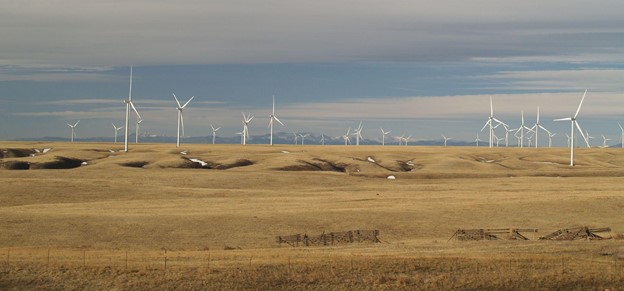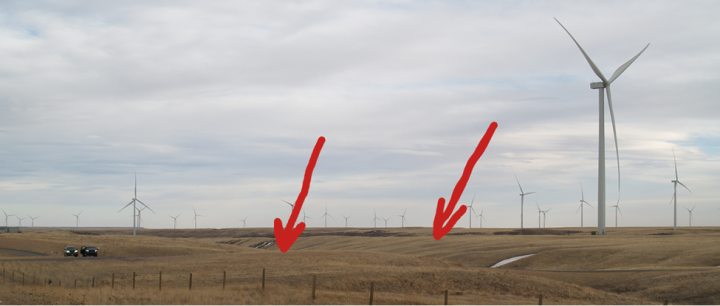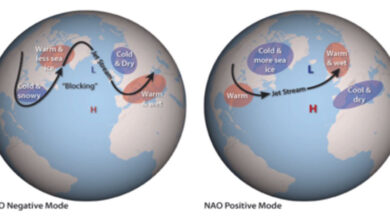Wind Turbines Out West Part II – Watts Up With That?

Kevin Kilty
This is a continuation of an earlier essay found here. I have repeated some background information for the convenience of the reader.
Background
Wind energy development has suddenly exploded in southeastern Wyoming. In just two counties we have now in operation, or permitted, some twelve wind projects involving 613,000 acres (958 square miles) and offering nameplate rating of 6,300MW. In this continuation of the earlier essay I am going to focus on the more technical uncertainties involved in permitting a wind energy conversion plant.
Completeness
The purpose of an applications process at the county level followed by a similar one at the State level is to ensure that a project not present hazards to the health, safety, or welfare of citizens or wildlife. Albany county zoning for example states its purpose as
“To assure that any development and production of wind-generated and solar-generated electricity in Albany County is safe, effective, and that it will minimize impacts to wildlife; … To acknowledge that these facilities are clearly visible and cannot be hidden from view, however, design consideration should include minimizing the degradation of the visual character of the area”
To achieve this the zoning regulations demands an application should address these selected items
“…general nuisances, specifically such as noise, vibration, that may affect off-site property owners. And show that the WECS Project or the solar energy facility will not be a significantly negative impact on wildlife species in the area…” [1]
in a complete manner. If I were to add “fire safety” to my list of concerns, these would cover virtually all of the local complaints and concerns about wind energy generally.[2] Let me speak about each.
Impacts to wildlife
The widely known problem with wind turbines is they kill birds, and particularly soaring birds with small populations often at risk. Altamont Pass in California is an especially egregious example that is a black-eye for the wind energy industry. A recent essay here addressed some of these concerns.
A lesser qualified wildlife threat is to big game. In southeastern Wyoming these include Wapiti and Mule Deer populations, but mainly pronghorn populations which in this neighborhood are vast – perhaps 100,000 individuals. These pronghorn have no documented migratory paths to other winter ranges in the state, and appear to be permanent residents to this particular area.[3] One might suspect they are in a sort of equilibrium among other grazers and browsers according to the carrying capacity of this home range.
In addressing impacts to big game one recent application noted that they expect no permanent harm to survival, and for big game to return to this range during operations when there is minimal human activity, noise, and traffic within the project. They cited two documents in support. Naturally I had a look.
While a guidance document from the Wyoming Game and Fish Department stated essentially that “little is known about the impact of wind energy on big game” it gave some guidance on reducing impact such as how to construct proper fencing.[4] A research paper concluded wind energy presented no threat to survival of pronghorn,[5] but they listed limitations of their study not mentioned in the application including:
- The study area involved a small wind farm (12 sq. miles) thus could not say much about larger facilities. All other facilities are larger ranging from 40 square miles up to 500. We are thus in unknown territory as far as impacts go.
- The study duration was only 3 years and so could not state much about long term operations.
To these I could add that during their baseline winter they were still netting and collaring animals. Therefore their baseline data is partially censored.
The scientific literature on big game and wind energy is thin, but there do exist a couple of studies done at Wyoming field sites that focus on pronghorn alone. What seems to be the most robust finding of this research is first, that wind turbines are placed in the same ground pronghorn prefer for winter grazing; and second, that pronghorn tend to avoid wind turbines long after the construction is over and operations begin.[5] This indicates a behavioral change for unknown reasons, but behavioral changes can lead eventually to demographic changes. All research suggests a need for longer term monitoring.
There is a population of about 4,600 pronghorn that are permanent residents of a lune-shaped region of land bound by I-80 on the south and the Union Pacific mainline and US 30/287 on the north. The Rock Creek wind farm will cut across the center of this territory, and itself contains about 15,000 acres of what the Wyoming Game and Fish calls “critical winter range.” The applicant in this case has produced a draft Monitoring Plan for wildlife. Yet the plan is so carefully worded and vaguely aspirational that I do not know if any longer term monitoring plan will actually occur.
The Clear Air of the West
Visual impacts that turbines present include flicker, viewshed, and aircraft warning systems. Some time ago I wrote an essay regarding flicker and why rules of thumb which may be reasonable to use at sites in the midwest and eastern U.S. are not appropriate to the clear air of the West. I won’t repeat that discussion.
Applications contain a section on view impact. In one case the photographs provided were terrible. The views were overwhelmed by smoke and haze from forest fires in Colorado. Several views chosen were not representative of the visual impact the project will make. This should have been easy to correct and that it wasn’t is probably due to there being no standard or measurable regulation to meet – no one cares, in other words.
There are three points to make about viewshed.
First, photographs do not present a scene in the same way that a human sees it, so photographs cannot inform a commission about visual impact. A study done by Argonne Labs in 2011 to assess the visual impact of wind farms in Wyoming and Colorado noted that photographs consistently under-represent the degree of visual impact observed in the field.[6]
Second, people simply have no idea how visually arresting 600+ foot tall turbines with turning blades are going to be under morning or evening light with a dark sky behind. One person at a county hearing explained that no one would even notice these turbines at a distance; this person had no idea. I have yet to find a way to make this apparent, but the aforementioned Argonne Lab study noted that in the clear air of the West 383 foot tall turbines were likely to become a visual focus at a distance of 12 miles, and scaling up to 600+ feet puts that out to 18-20 miles. In more plain language, once the current permitted plants are built wind turbines will be a focus of visual attention along a continuous stretch of 180 miles of I-80 for 18 miles either side of the highway – 6,480 square miles of territory.
Third, travelers, vacationers and hunters would all probably prefer to see natural scenery. This is borne out by surveys of highway travelers.[7] In other words, wind turbines might have bad implications for other local income.
Aircraft warning lighting presents another problem to address. Even people who are quite favorably disposed toward wind energy tell me they dislike the red blinking lights all over the countryside at night in the clear air of the West. In response to this the wind energy applicant usually promises to seek permission from the FAA to install an aircraft detection lighting system (ADLS) that operates only when an aircraft flies within an envelope 3 nautical around the perimeter of the wind farm and from 200 feet above ground surface to 1,000 feet above the tallest obstruction. However, permission for this is solely at the discretion of the FAA who care neither about the feelings of residents towards blinking red lights nor for the needs of the wind industry.
Even granting a request for ADLS does not completely solve all problems. The Roundhouse wind farm along I-80 west of Cheyenne has an ADLS running, but there is so much air traffic that the lights are on often anyway. If the FAA does not grant the request for ADLS then the applicant will ask for a variance to fall back and install the usual aircraft warning lights. This will probably be granted.
Acoustics
Everywhere wind turbines are proposed noise becomes a concern. I have written an essay about wind turbine noise here before, so I will keep this short. The problem as I see it is three fold: 1) expected noise levels are calculated using a standard that does not pertain everywhere, 2) local noise ordinances are often poorly written, and 3) rarely does anyone check actual noise levels against these projections to learn about their deficiencies.
ISO9613-2 has become a U.S. customary method for calculating noise from wind turbines. This is so largely because it can be employed when one knows few details about the site.[8] This ISO 9613-2 standard is not specific to wind turbines and is rather a general means of noise calculation “applicable, directly or indirectly, to most situations concerning road or rail traffic, industrial noise sources, construction activities, and many other ground based noise sources.” (ISO9613-2 p. 1) How does a customary method work when so few details are available? Because it makes numerous simplifying assumptions.
The terrain and weather of the western U.S.often violate these assumptions. On top of this, turbines are becoming taller and more powerful which violates assumptions further.[11] It isn’t that the standard is worthless, but each violation of its many assumptions renders the calculations made with it increasingly uncertain.
The following violations of these assumptions make its use at many Western locales problematic and are backed up by wording in the standard or by published research.[9]
- A noise source height limit of 30m as noted in the literature and implied by Table 5 in the standard itself.
- Geometrical diverge leads to attenuation at 6dB per doubling, but meteorological conditions common to the West in winter could lead to something more like 3dB decline per doubling. This is especially so for high capacity turbines.
- As turbines become more powerful they emit mechanical noise of lower frequency (6MW turbines likely shift their noise spectrum by ½ octave). Thus more of the noise lies below the A weighting scale of the ISO9613-2 standard.
- Ravines and arroyos common in western terrains can duct sound in a manner that leads to even less than 3dB per doubling of distance.
- Ground attenuation assumed to result from reflections with the ground interfering destructively with direct sound. Tall sources can violate this.
- Ground attenuation requires ground that is flat or is a level slope per the standard itself. See item 4, above.
- Note 24 of the standard suggests uncertainties in Table 5 (see item 1, above) may be exceeded greatly at a given site on a given day – the result of weather and terrain.
Peer-reviewed literature has documented deviations from ISO9613-2 estimates by 5-6dB for octaves and 4dB overall A weighted. Weather alone can induce deviations by 7-14dB.[10] Figure 2 shows weather related issues, common to much of the mountainous west which lead to 3-D influences on sound propagation, and which ISO9613-2 cannot account for. Figure 3 shows several deep ravines within an otherwise constantly sloping peneplain which leads to very strange acoustic surprises.

Figure 2. Right hand panel shows the typical daytime temperature profile along with wind shear increasing rightward both of which cause phase fronts to bend away from the surface, leaving a quiet zone downwind. Left hand shows a typical night time profile and shear increase with height to the left, both of which cause phase fronts bending toward the surface and enhanced noise downwind.
One puzzling thing is that despite estimates of uncertainty stated within the standard itself, and additional ones known from turbine manufacturers – no one seems to use this to make reasonable design margins in a way that engineers should. As Moller and Peterson say, “A safety margin must be incorporated at the planning stage in order to guarantee that the actual erected turbines will comply with noise limits.” [11] The process of building such a margin I outlined in an earlier essay. In many places this is not an easy process to accomplish credibly.[12]

Figure 3. The red arrows indicate the location of deep ravines in what looks otherwise like an ideal terrain for the application of ground attenuation calculations in ISO9613-2. These ravines intersect downslope and then intersect with others connecting to other parts of the wind turbine plant.
While noise is not a direct cause of health problems, it is a contributor to sleep disturbance which can become an indirect cause. About 5% of turbine installations account for a majority of noise complaints according to a 2012 study.[10] However, as more wind energy plants invade residential areas in the west, where ISO9613-2 can be expected to provide uncertain noise calculations, these problems will probably grow, and public backlash will hopefully increase. As this study wisely suggested
“Efforts directed at evaluating models used to predict noise levels from wind turbines–in contrast to actual measured noise levels–would be valuable and may be helpful in informing and reassuring residents involved in public discussions.”
Certainly this would be helpful, but so would writing useful noise ordinances in the first place. For example, in the two counties of southeastern Wyoming I have referred to, one has no ordinance at all except to say the noise should not present a nuisance. The other county has a noise limit of 55 dBA but with no metric stipulated. Thus, applicants apply a metric they prefer. I would suggest instead using one that meaningfully addresses the problem like Lden, which applies a penalty for evening (5 dBA penalty) or night-time (10 dBA penalty) which are the time periods of most concern with regard to noise.
Alternatively one would hope to have counties without specific limits at present, mandate ones tighter than is typical. For example, Washington County, Colorado has noise limits at the property line of a non-participating property not to exceed 45 dBA for more than 6 minutes of any hour or not to exceed 50 dBA (Leq,60).[13] These are not as stringent as most European standards, but are better than what we have in Wyoming.
References:
- Albany county zoning sections found in ZoningUpdated_1-20-22_202201201614459171.pdf
- Safety concerns killed the Fountain project in California. The Roundhouse plant in eastern Wyoming had a turbine catch fire about six months into operation. It’s a real concern.
- Kauffman, et al, 2018, Wild Migrations: Atlas of Wyoming’s Ungulates, Oregon State U Press.
- WGFD 2010. This is a guidance document from the Wyoming Game and Fish Department for minimizing wind energy impacts on wildlife. Colorado guidelines are essentially the same.
- The original study cited by the applicant in this case was: Kaitlyn L. Taylor, Jeffrey L. Beck, Snehalata V. Huzurbazar, Factors Influencing Winter Mortality Risk for Pronghorn Exposed to Wind Energy Development, Rangeland Ecology & Management 69, 108–116, 2016. But see these following studies adding more detail: Smith, Kurt T., Taylor, Kaitlyn L., Albeke, Shannon E., and Beck, Jeffrey L., Pronghorn Winter Resource Selection before and after Wind Energy Development in South-Central Wyoming, Rangeland Ecology and Management, 73(2) : 227-233, 2020. And, Milligan, M. C., A. N. Johnston, J. L. Beck, K. T. Smith, K. L. Taylor, E. Hall, L. Knox, T. Cufaude, C. Wallace, G. Chong, and M. J. Kauffman, Variable effects of wind-energy development on seasonal habitat selection of pronghorn. Ecosphere 12(12), 2021.
- Robert G. Sullivan, et al, Wind Turbine Visibility and Visual Impact Threshold Distances in Western Landscapes, Environmental Science Division Argonne National Laboratory Argonne, IL found online.
- William C. Gartner and Daniel L. Erkkila, Attributes and Amenities of Highway Systems Important to Tourists, Transportation Research Record: Journal of the Transportation Research Board, No. 1890, TRB, National Research Council, Washington, D.C., 2004, pp. 97–104.
Stephen E. Keith, Katya Feder, Sonia A. Voicescu, Victor Soukhovtsev, Allison Denning, Jason Tsang, Norm Broner, Tony Leroux, Werner Richarz, Frits van den Berg, Wind




